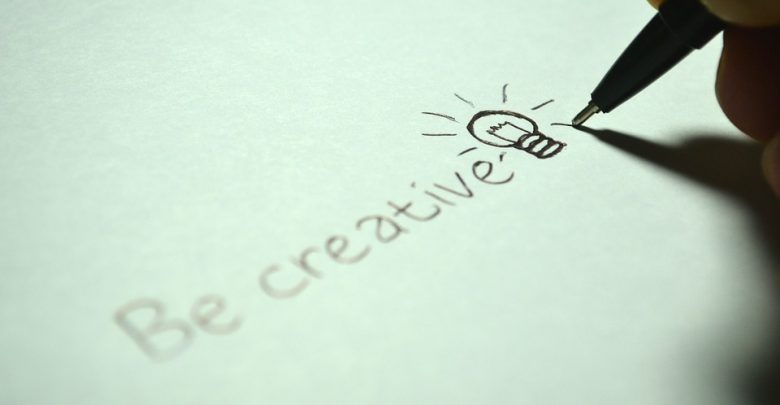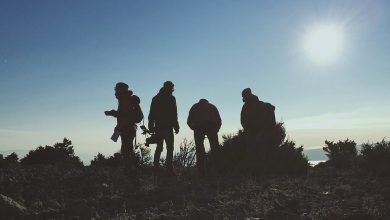Tips and tricks for preparing the working room and (not) including outdoors
Physical environment plays an important role in the way that the training programme is designed and conducted. Questions such as the number of working rooms, the size of it, spaces outside of the working room and outdoors are important to answer in order to choose the methods, to plan the time, to create the atmosphere, etc. “Establishing an environment conducive to learning is a critical aspect of starting a training session off on the right foot. You can ensure that participants walk in to a relaxed atmosphere and an environment that is welcoming and ready. The room says you took the time to get ready for them.” (Biech, 2005)

Why did I choose this tool? This tool is about creating a learning environment. Small things that should be taken into consideration. Small things that go unnoticed, but are crucial.
How does this apply to being a trainer? Physical environment will affect working and learning of the group in one way or another. “Participants should be physically at ease, be able to hear and see adequately and there should be enough room for the planned activities.” (Titley (ed.), 2005) Therefore it is important to know how to make the environment work for you and not against you.
Main content:
According to Elaine Biech (2005), “your room may have a significant impact on your training session. Arrange the room to support the learning objectives and the amount of participation you will desire. Typically you will not have the opportunity to select a room. However, if you do, consider the attributes that will create the best learning environment for your participants:
Size: Arrange for a room to accommodate the number of participants. Remember, a room that is too large can be as bad as the one that is too small.
Training requirements: If the training session entails many small group activities, determine if there is enough space in the room. If not, arrange for additional breakout rooms to accommodate your needs.
Accessible: Ensure that the room is accessible to all, including those who have limited mobility.
Convenience: Easily-accessible restrooms, snacks, lunch accommodations, and so on help to ensure that the participants return on time after breaks or lunch.
Distractions: Select a room that is free of distractions and noise. Thin walls with a sales convention next door may not create the environment you’re trying to establish for learning.
Obstructions: Select a room that is free of structures such as posts or pillars that may obstruct participants’ views.
Seating: Select a location that provides comfortable, moveable chairs. Seating arrangements should further enhance the learning environment you wish to establish” (Biech, 2005). “Placing the chairs in a circle is informal and contributes to an atmosphere of exchange and even intimacy. Everybody can see each other, and there are no preference seats. Placing the chairs in a row so that speakers are in front of participants is useful for visual presentation, as long as everybody can see. As opposed to a circle however, it sets up an obvious power relation. Placing the chairs in a series of small circles is useful when you create working groups to carry out small exercises or tasks during the session. The speaker can be accommodated on a raised platform at the most appropriate point in the room.” (Titley (ed), 2002)
“Furniture: In addition to decisions about the seating arrangements and the kind of tables you prefer, you will want a table in front of the room for your supplies and equipment. Don’t allow too much space between the table, from which you will be presenting and the front participant row. Reducing the amount of space between you and the learners increases the affect level in the room. It closes the distance between you and the trainees both physically and emotionally. The participants feel better about you, themselves, and the training session.
One more thing: Don’t forget the wastebasket! Usually, neither training rooms nor hotel conference rooms have wastebaskets. Remember to ask for one.
Lighting: Lighting should be adequate. Dimly lit ballroom ambiance will not promote energy in a training session. Is the lighting bright enough? Is it natural lighting? If the room has windows, which direction are they facing? Can windows be darkened, if necessary? Know where light switches are located so that you can brighten or darken the room as needed.
Workable walls: Most trainers hang flipchart pages on the walls: the session objectives, small group work, and so on. Is wall space available or do windows surround the room? Does art cover the walls or are they open? Usually the front of the training room should be opposite the entrance to avoid distractions when folks come and go. Is that possible in the room you’re considering? Use markers that absolutely do not bleed through so there is no danger of ruining walls.
Climate control: You will never be able to please everyone in your session. However, if you have the ability to adjust it yourself, you can try. Determine where the thermostat is located and whether you have any control over it. Experiment with it while you set up the room. Does it respond quickly or slowly? Do you need to contact someone to make adjustments?
When adjusting thermostats, make changes one degree at a time and give the equipment time to work. Large changes in the thermostat will cause a once too-cool room to become too warm.” (Biech, 2005)
Should we use the outdoors?
Julius E. Eitington (2002) “strongly favors holding one or more sessions outdoors, either for the total group of for small group work. Its advantages:
- A change of location can have an invigorating effect. Being confined to a single room, possibly without a window, for six hours or more can become a bit debilitating, particularly if you have participants whose jobs allow them to be outdoors much of the time.
- Participants whose images of a schoolroom are the usual one of tight indoor quarters are likely to be surprised and pleased by a bold venture to the outdoors.
- After a particularly heavy session, it can have a relaxing effect
- To the extent that we can provide variety, change of pace, and the freedom of a classroom without walls, we can stimulate the creative juices to flow.” (Eitington, 2002)
There is plenty of literature and research supporting outdoor activities and experiential outdoor education as a means of ensuring a better connection among the participants as well as within the learner him/herself. Rogers and Smith (2012) address that “being in nature can have a profound effect on people and everyone’s reaction will be different. There is a strong body of research confirming that direct contact with nature increases mental health, psychological and spiritual development. These benefits include stress reduction, a sense of coherence and belonging, improved self-confidence, self-discipline, and a broader sense of community”
“Negative outdoor aspects:
- People may not be comfortable sitting on the grass;
- It may be noisy outside (cars, airplanes, lawnmowers);
- It may be hot and sticky in the summer months;
- People (nonparticipants) may be walking by and cause distractions;
- Time may be lost going to and from the outdoor location.” (Eitington, 2002)
Reflection questions:
- What are you searching for in the venue where you will organize educational activities?
- What are the main important elements of the working venue for you?
Exercises:
How to apply it in everyday life:
Get to the training venue before the group gets there – ideally even a day before to make the room yours. Go through the programme, visualize which activity is held where, what kind of preparation will be needed, if you can run one or more sessions outside. More importantly, answer the question if you are comfortable with changing environments or staying in one working space.






